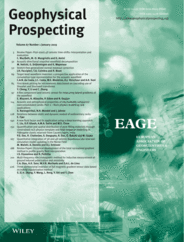
Full text loading...
 , Maria‐Daphne Mangriotis1
, Maria‐Daphne Mangriotis1 , Hamed Amini1
, Hamed Amini1
A review and analysis of post‐stack time‐lapse time‐shifts has been carried out that covers published literature supplemented by in‐house datasets available to the authors. Time‐shift data are classified into those originating from geomechanical effects and those due to fluid saturation changes. From these data, conclusions are drawn regarding the effectiveness of post‐stack time‐shifts for overburden and reservoir monitoring purposes. A variety of field examples are shown that display the range and magnitude of variation for each class of application. The underlying physical mechanisms creating these time‐shifts are then described, and linked to a series of generic and field‐specific rock physics calculations that predict their magnitudes. These calculations serve as a guide for practitioners wishing to utilize this information on their own datasets. Conclusions are drawn regarding the reliability of this attribute for monitoring purposes, and the extent to which further development is required and how it should be reported by authors.

Article metrics loading...

Full text loading...
References


Data & Media loading...

